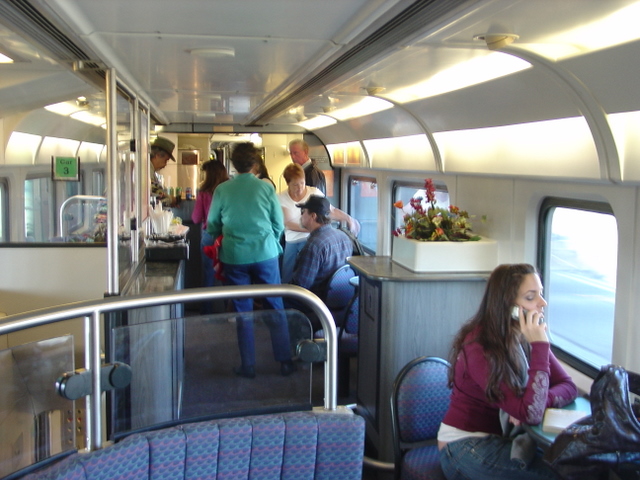Rail versus bus service on city streets
I've analyzed the qualitative differences between rail service and bus rapid transit (BRT) before, but given the sustained interest in BRT where I live in the Bay Area, I want to spend one more moment on it. Here are a few pictures of BRT lines in North America from Wikipedia. It's a somewhat random sample, based on systems for which I could quickly find imagery. I hope I'm being fair in showing typical BRT systems in North America.
Now I want to show you a few examples of impressive street-based rail systems in North America, based solely on appearances:
What's the difference between our typical BRT implementations and the best of our streetcar/light-rail (and our lone cable car) systems? Well for one thing, the cars last a long time and are loved enough to maintain them in service for upwards of a hundred years. The systems with new fleets are impressive too. They are sleek, graceful, and in some cases the scene of them traversing a resurfaced street is downright beautiful (it's hard to disagree when you look at the European examples.) I think the real difference is the pursuit of grandeur, for lack of a better word. Whether we pay $10 or $100 million per mile of dedicated transit right-of-way in the city does matter, but it's possible to pay too little and miss out on the grandeur that is within reach. I think the BRT examples lack any bit of grandeur, whereas many of the streetcar/light-rail/cable car examples above achieve it. When I hear talk of putting BRT on Van Ness Ave in San Francisco, or on Telegraph Ave in Oakland, I hang my head low, because I know the people making the decisions are those who don't recognize the potential for grandeur in our streets.
Can modern regional rail, and even subways, have grandeur?
I stood on the BART platform in the Rockridge neighborhood of Oakland this morning. This is the best representation of it that I could find online:
There's no grandeur in waiting on a freeway platform or in sitting in a BART train. The cushioned seats on the trains are about the only thing going for it, and those will be removed in the next ordered train set owing to media-hyped findings of dangerous bacteria. Typical not-so-grandiose factors to consider when choosing to ride most modern regional/commuter trains and subways are: platforms on freeways or in dreary underground caverns, crowded and dirty cars, uncomfortable seats (if available at all), harsh fluorescent lighting, loud ventilation fans, loud track noise in tunnels (seems to be mostly a BART problem), and complete lack of good behavioral enforcement (since no officials besides the driver are on the train.) Certainly, our train systems have a lot of functional problems relating to infrequency, underdeveloped networks, and sometimes a lack of express service where clearly warranted. The transportation bloggers would love to fix these problems, and figure out how to do it with maximum efficiency. While we do that might we also achieve grandeur on our regional trains and subways? I think so.
Above is AMTRAK Capitol Corridor, the regional/commuter train between Sacramento and San Jose. The interior is lovely and comfortable (and these trains have great ridership, despite the picture.) This certainly seems like a basic level of quality we can apply to any regional or commuter train: plush seats, a seat for everyone under normal commute conditions, cleanliness, soft lighting, and officials on board to enforce good behavior and help people. Capitol Corridor also features a snack car that sells coffee, beer, and basic food. Whether AMTRAK makes any money on this or loses money doesn't really matter--it's a really nice feature to have on any kind of transit:
It advertises soft lighting, individually-controlled climate control per car, and wide doors. It looks much more like the subway cars I already know than a comfortable sitting space with amenities.
I think what we need to do is to start treating our subways with the same type of grandeur that used to be applied to passenger trains. It doesn't require caviar nor private compartments, it just means taking the practical comforts of trains and adapting them to the size and larger passenger loads on subways. It's a two-way street--make the subway more like a comfortable train car and reduce the overcrowding and arbitrary mixing of short and long-haul riders in each car. It of course requires running higher frequencies, new cars, on board attendants, expanding networks--in short spending a lot more money on capital and operational costs. But we need to do many of those things anyway just to make transit usable. Let's get the cost and efficiency numbers in the right neighborhood, but then let's "waste" some money on grandeur. We might be surprised at what it does for the ridership numbers.






No comments:
Post a Comment